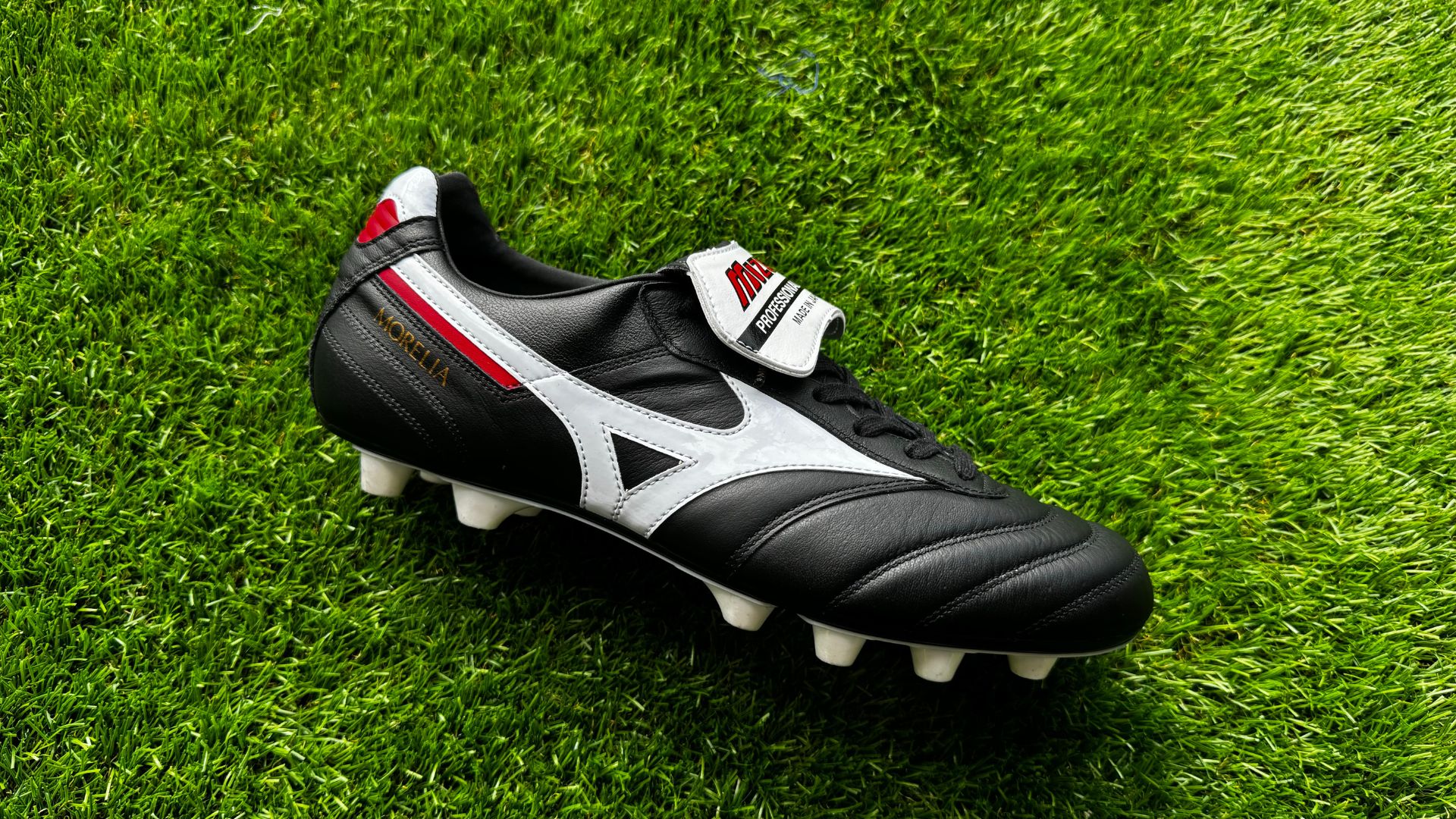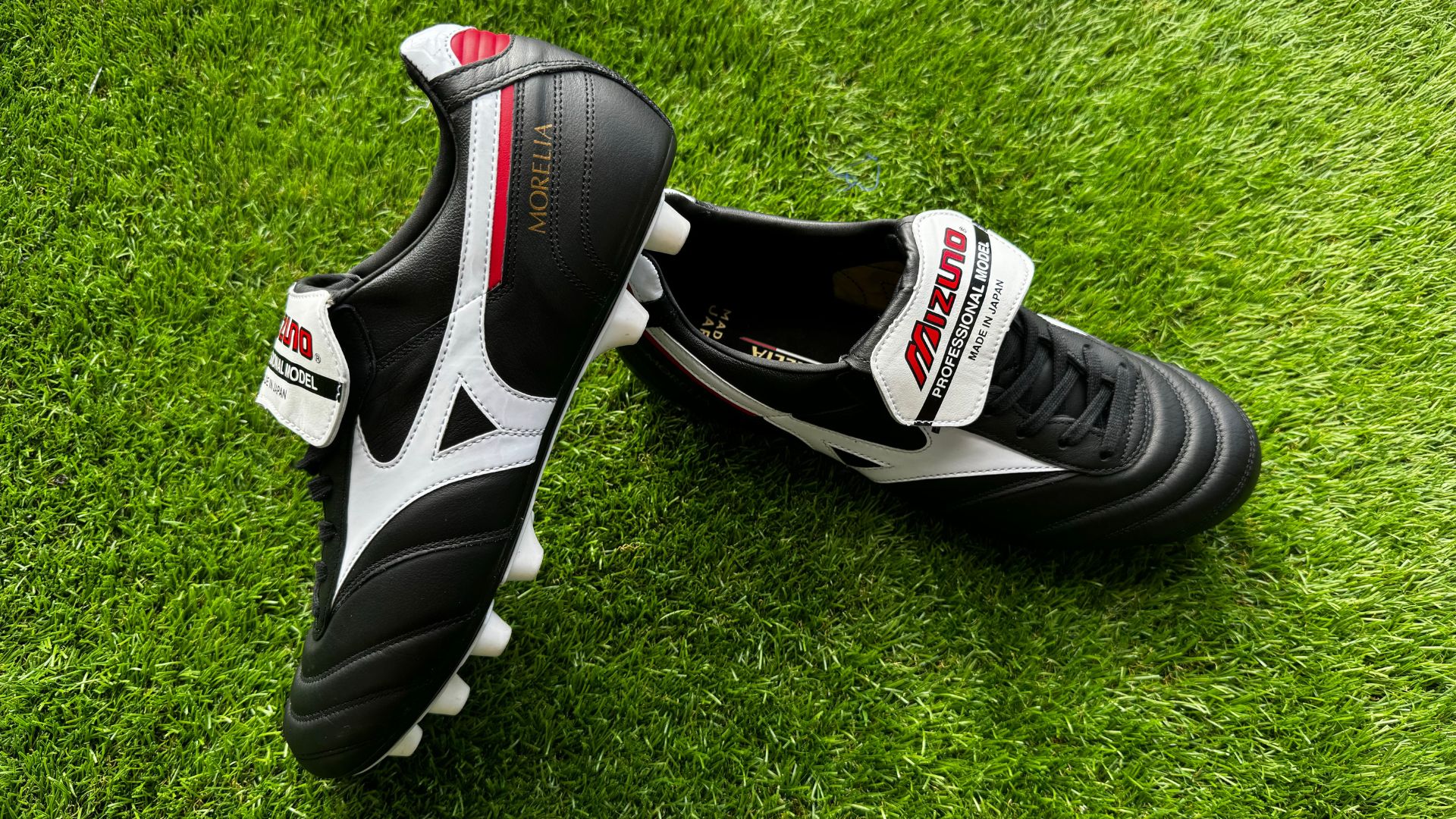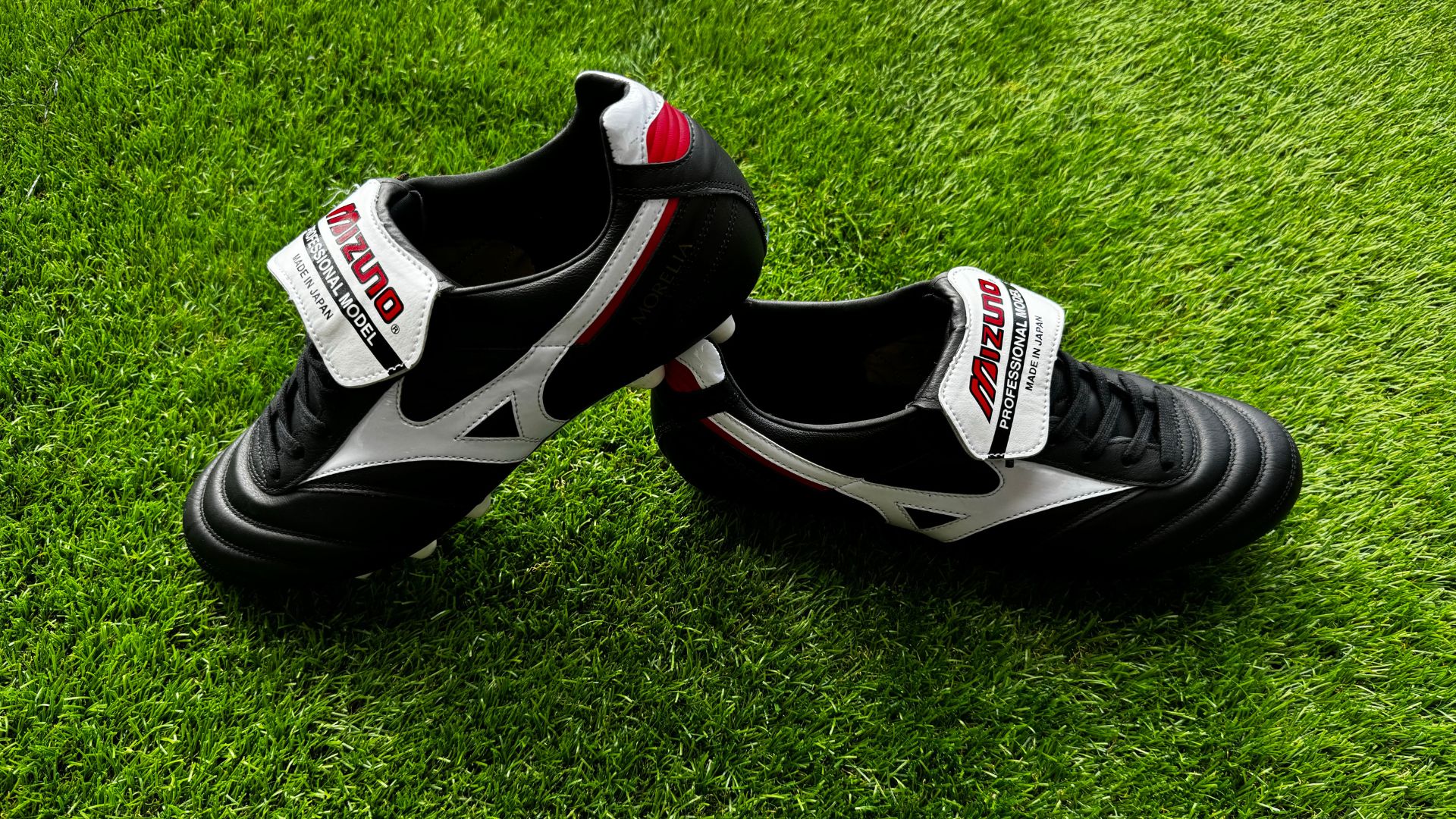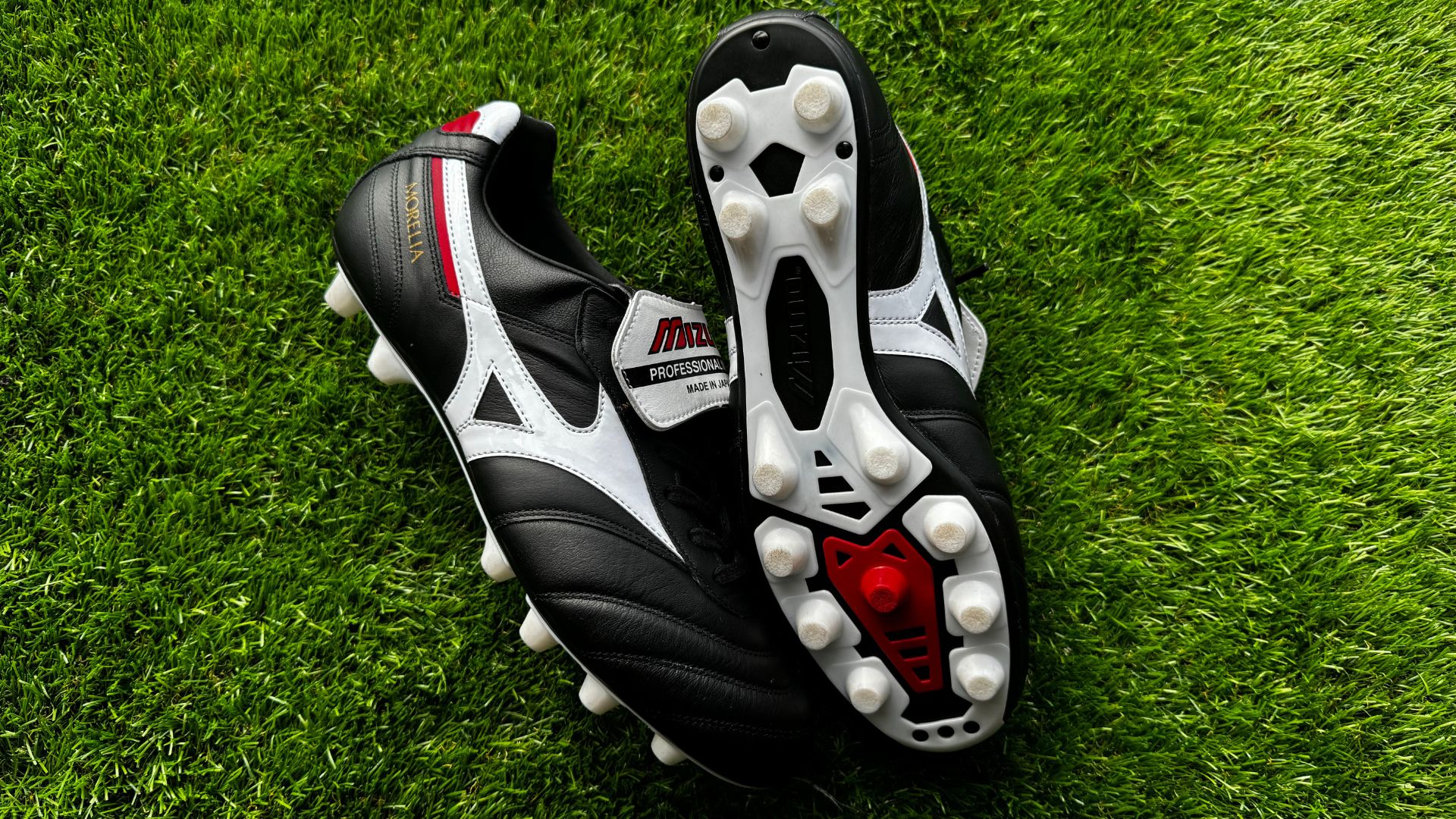
With time and innovation, football boots have reached a point where the top of the range offerings all perform at a relatively high level and the true difference is made more by personal preference and differences in foot shape.
As with many things in life, nostalgia plays a part in many people’s assessments and boots from yesteryear are fondly remembered and often favoured over modern ones. The ‘truth’, as far as it can exist here, is probably somewhere in the middle.
One thing that is for certain, though, is that very few boots are able to truly stand out
from the rest in a market that is now saturated with many competent options. The Mizuno Morelia II Made in Japan is not a new boot, but it boasts a rare quality and comfort that means it is able to do what so few pairs are able to today – stand out.
Fortunately, I was lucky enough to try a pair on and put them through their paces...
Mizuno Morelia II Made in Japan review

One of Japan's biggest brands, Mizuno has made a name as producers of high-quality gear across a number of sports. That being said, they still occupy a more niche space in the football boot market in comparison to the biggest and most popular brands, and operate as more of a boutique offering in Europe.
Mizuno offer both an Elite and Made in Japan version, with the latter manufactured in the company’s Japan factory while the Elite is made in Singapore. Mostly made by hand, the Made in Japan model is also left on a last for 24 hours, far longer than most, if not all, other boots on the market. This highlights just one of the many steps Mizuno takes to ensure the end result is of the highest quality possible.
After trying a pair of the Made in Japan version of the Mizuno Morelia II, I can attest to Mizuno’s success in this pursuit of excellence. At a time when brands are slowly moving away from natural leather, the Morelia II MIJ features an upper made from wonderfully soft Japanese leather. The boots feel great out of the box and soften up even more to make you feel like you are walking on cloud, they're honestly that comfortable.
The quality of the materials is such that the leather keeps its shape rather than overstretching and becoming slightly sloppy like other leather pairs sometimes do. A good comparison here is with the Adidas Copa Mundial, a boot that remains popular among traditionalists. In contrast to the Morelia II, the Copa can overstretch, which limits its performance levels over time.

What I found from the Morelia IIs was a plush leather that provides a nice touch on the ball, while the extra time on the last is certainly noticeable because it helped the boots achieve a great fit. The boot is also very accommodating for those with wider feet thanks to its traditional construction - but despite this, they're also surprisingly light – especially when compared to other leather boots. With that in mind, this makes the Morelia II suitable not just for defenders, but also wingers and strikers wanting something that is lighter on their fet.
I personally prefer boots that have a more modern fit because I'm not a fan of excess bulk and weight that older pairs generally have, but the Morelia IIs boast the advantages of both traditional and modern to create something truly unique in the upper.
Under foot, the Morelia II has a solid and dependable soleplate. It features all conical studs so has good rotational support. I tried the FG pair on both grass and artificial surfaces and, although like any FG pair it is best kept for use on natural grass, the outsole is not aggressive at all so is far from the worst for use on AG.
The soleplate is also connected to the upper using rivets, a once commonplace feature that is not often seen on modern pairs. Separation is usually the beginning of the end for a pair of boots, and these rivets makes this far less likely to happen, thus improving durability and long-term quality.

All of these very positive elements I've discussed about the boots, however, come at a price - a very high price. The Morelia II MIJ retails at around £300, quite significantly more than pairs from any other brand on the market. Meanwhile, the Elite version at £140 offers much of the same quality at a fraction of the cost, so is certainly worth considering for those who are interested in the Morelia II but are unwilling or unable to match the expensive price tag.
Football boot design has come a long way over the last 20 to 30 years, and the
standard look of a pair today is in stark contrast to what we were used in the 1990s
and before. For this reason, even the appearance of a boot like the Mizuno Morelia II would be enough to turn some people away.
However, in terms of quality of materials, build quality, comfort, fit and many of the characteristics that are truly important when considering a pair of football boots, it doesn’t get much better. The classic look also has a charm that pairs made since the initial release of the Morelia II lack in comparison.
The fact that this does not come at the expense of being lightweight was by far the most surprising and one of the most impressive aspects of wearing these boots.
More football boot reviews
Adidas F50 Elite review: Does the return of the iconic boot live up to expectations?
Puma Ultra 5 Carbon Review: Are these the most technologically-advanced boots ever made?
Nike Phantom GX 2 Elite review: An improvement on the best football boot of 2023







